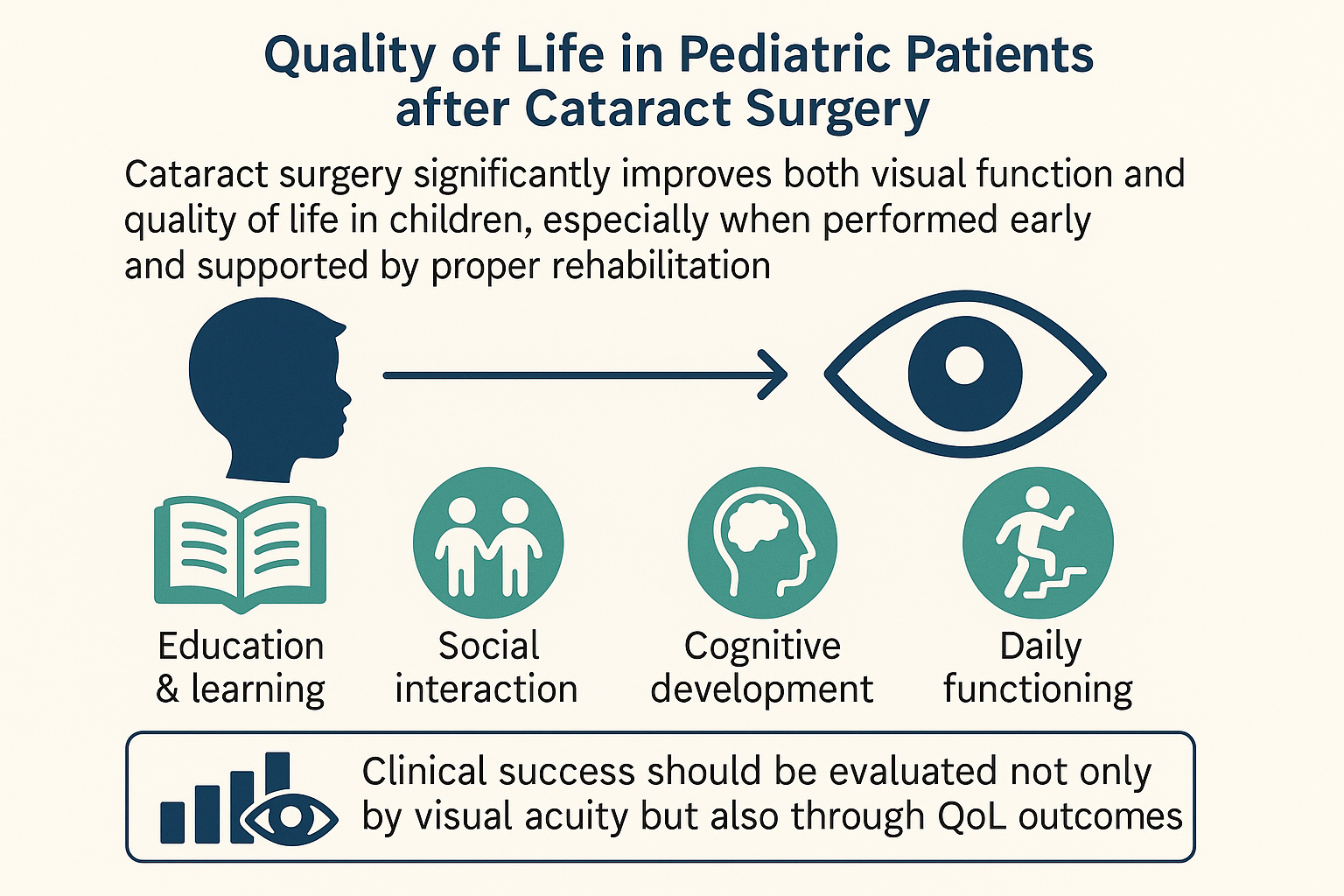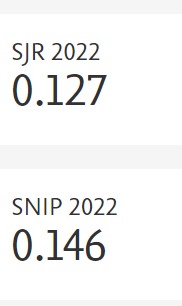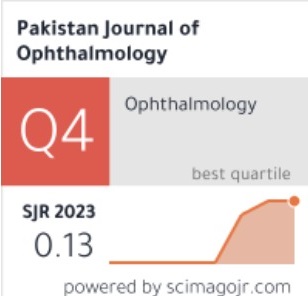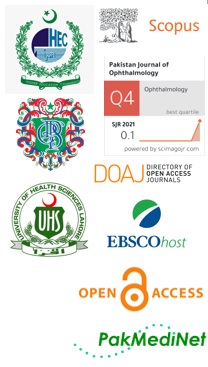Quality of Life in Pediatric Patients after Cataract Surgery
Doi: 10.36351/pjo.v41i3.2101
DOI:
https://doi.org/10.36351/pjo.v41i3.2101Abstract
Purpose: To assess the quality of life in pediatric patients who have undergone cataract surgery and identify clinical and demographic variables that influence visual recovery and QoL outcomes.
Study Design: Descriptive observational.
Place and Duration of Study: Jinnah Postgraduate Medical Center, Karachi. From March 2021 to March 2023 Methods: A total of 230 pediatric patients who had undergone cataract surgery between the ages of 6 months and 12 years were enrolled from a tertiary eye care center. To evaluate the impact of surgery on children’s quality of life, two validated instruments were used. The Pediatric Quality of Life Inventory (PedsQL) was employed to assess general health-related quality of life across physical, emotional, social, and school-related domains.
Results: The mean post-operative best-corrected visual acuity (BCVA) improved from 1.20 ± 0.34 to 0.48 ± 0.29 logMAR (p < 0.001). Over 68% of children achieved a BCVA of 0.5 logMAR or better. The mean total PedsQL score was 74.6 ± 12.5, with highest scores in physical functioning (81.2 ± 10.3). Children who underwent bilateral surgery, intraocular lens (IOL) implantation, and good compliance to amblyopia therapy reported higher QoL scores. Significant correlations were found between better visual outcomes and improved QoL (r = -0.61, p < 0.001).
Conclusion: Cataract surgery significantly improves both visual function and quality of life in children, especially when performed early and supported by proper rehabilitation. Clinical success should be evaluated not only by visual acuity but also through QoL outcomes.
Keywords: Pediatric cataract, Visual acuity,Quality of Life, Amblyopia

Downloads
Published
How to Cite
Issue
Section
License
Copyright (c) 2025 Rabia Chaudhry

This work is licensed under a Creative Commons Attribution-NonCommercial 4.0 International License.






